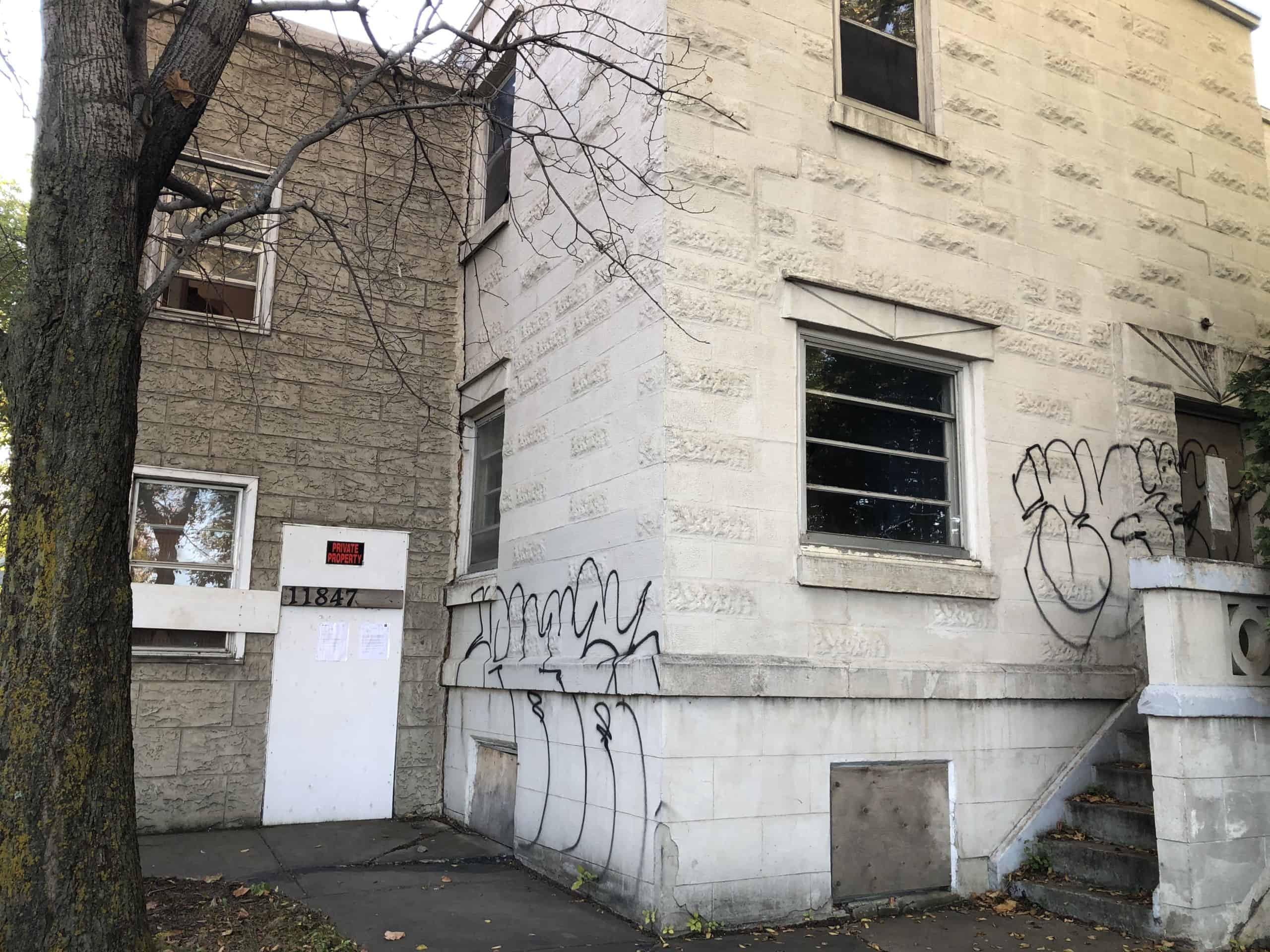The cost of problem properties
On the corner of 119 Avenue and 96 Street sits a large, old brick house. Nicknamed the Castle by local residents, it was built in 1944 and has been abandoned by the owners for nearly 20 years, allowing it to become derelict and a problem for those living in the area. The house is a hotbed for drug use, dumping, and fires. It is only one of nearly 500 properties throughout the city like it.
“When I first moved in, [police] discovered that there was a body buried underneath the garage,” recalls Virginia Potkins about another property on the block. “We’ve had a SWAT team out there, lots of problems with people squatting, people dumping, fires.”
Potkins moved to the area around five years ago and has been a voice for organizing and dealing with properties such as the Castle. According to The Socio Economic Costs of Edmonton’s Problem Properties, a study done by the Edmonton Community Development Company (ECDC), the estimated financial cost of 31 problem properties over four years (2017 – 2020) is 6.2 million dollars, 76 per cent of which is borne by the neighbourhood residents.
The study states, “Results demonstrate that problem properties create extraordinary demands on government services” and “Derelict and problem properties also trigger direct and indirect costs to neighbours and community members.”
According to the study, there are around 250 such problem properties in the Alberta Avenue, McCauley, and Eastwood areas alone.
In April, city council approved the 2023 – 2026 Approach to Problem Properties to provide the Problem Properties Initiative (PPI) with a long-term plan and funding increase to help deal with problem properties. One of the proposals is to create a new residential tax subclass, which allows the city to charge up to three times the regular tax rate to owners of problem properties.
Ward O-day’min Coun. Anne Stevenson agrees with the tax increase proposal.
“The hope is that the tax changes behaviours,” says Stevenson, whose ward includes the McCauley neighbourhood, one of most impacted by problem properties. “I think too… it is also an opportunity to reflect the fact that those properties have a more significant impact on city services and so it is fair and appropriate that they pay higher taxes to balance that out.”
Ashley Salvador, the ward Métis councillor who represents most of the areas surrounding Alberta Avenue (118 Ave), agrees with Stevenson.
“Derelict properties are an issue that touches every area in the City of Edmonton, but particularly Ward Métis…Over the past year-and-a-half, there has really been an increase in the number of folks who are experiencing challenges (with problem properties)… In this area, the fires have been a growing concern,” Salvador says. “We would specifically be looking at properties that have an Alberta Health order and have been deemed as unfit for habitation.”
This proposal will work in parallel with other City initiatives, including the Community Property Safety Team which uses an escalating enforcement model that includes boarding up, fencing, and even on-site security at the owner’s expense.
Potkins says the tax increase is a good step, but more must be done.
“There needs to be time limits on how long these properties can stay derelict and abandoned,” Potkins says, “[Owners] can’t just walk away from a house.”
The proposal is expected to take effect beginning in 2024, with the City using the 2023 year to identify properties that would be subjected to the tax increase.







